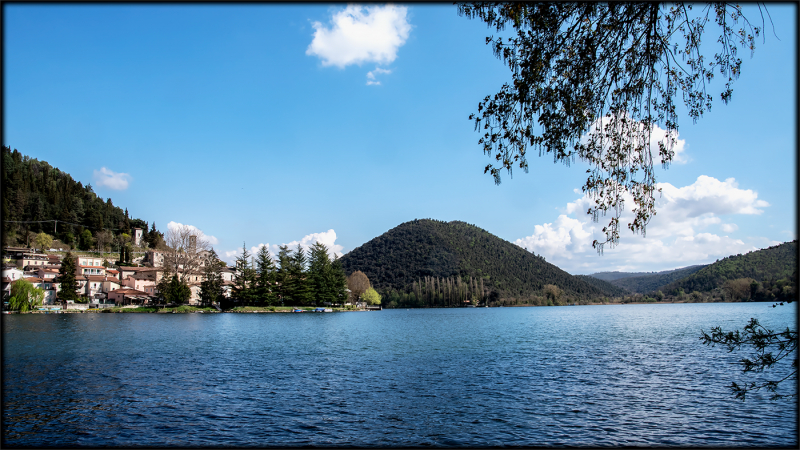Lake Piediluco, Italy

Lake Piediluco, placed within the south-eastern foothills of Umbria, with a branch bordering into the Lazio Region, is Umbria's second-largest natural lake once Lake Trasimeno.
The name is believed to mean “at the foot of the sacred wood”. At the side of the lakes Lungo, di Ripasottile, and di Ventana placed within the province of Rieti, it represents one among the remnants of the Lacus Velinus, a giant basin of deposit origin that was fashioned from the Quaternary period.
The lake has an irregular form and a fringe of regarding 13 kilometers, is found at an altitude of 375 meters higher than the water level and incorporates the most depth of 19 meters. Its natural tributary is that the Rio Fuscello, with another 2 tributaries that square measure artificial channels, one connecting it to the River Velino and therefore the different one conveyance to the lake a little of water derived from the River Nera. The River Velino flows out of the lake and is entertained towards the city of Marmore wherever it forms Marmore Waterfall.
The lake's unbelievable beauty was described by several artists as a stop of Grand Tour, thus referred to as in 1670 by the priest and author Richard Lassels, author of An Italian Voyage. Its scenery is magnificently captured within the paintings created in 1826 by the French painter Jean-Baptiste Camille Corot. The lake abounds in fish: per a 2010 study, their square measure fifteen fish species populating the lake and eight of them square measure non-native. The lack of currents and therefore the presence of comparatively regular winds create the lake a wonderful surface for national and international regattas of canoeing and racing.










